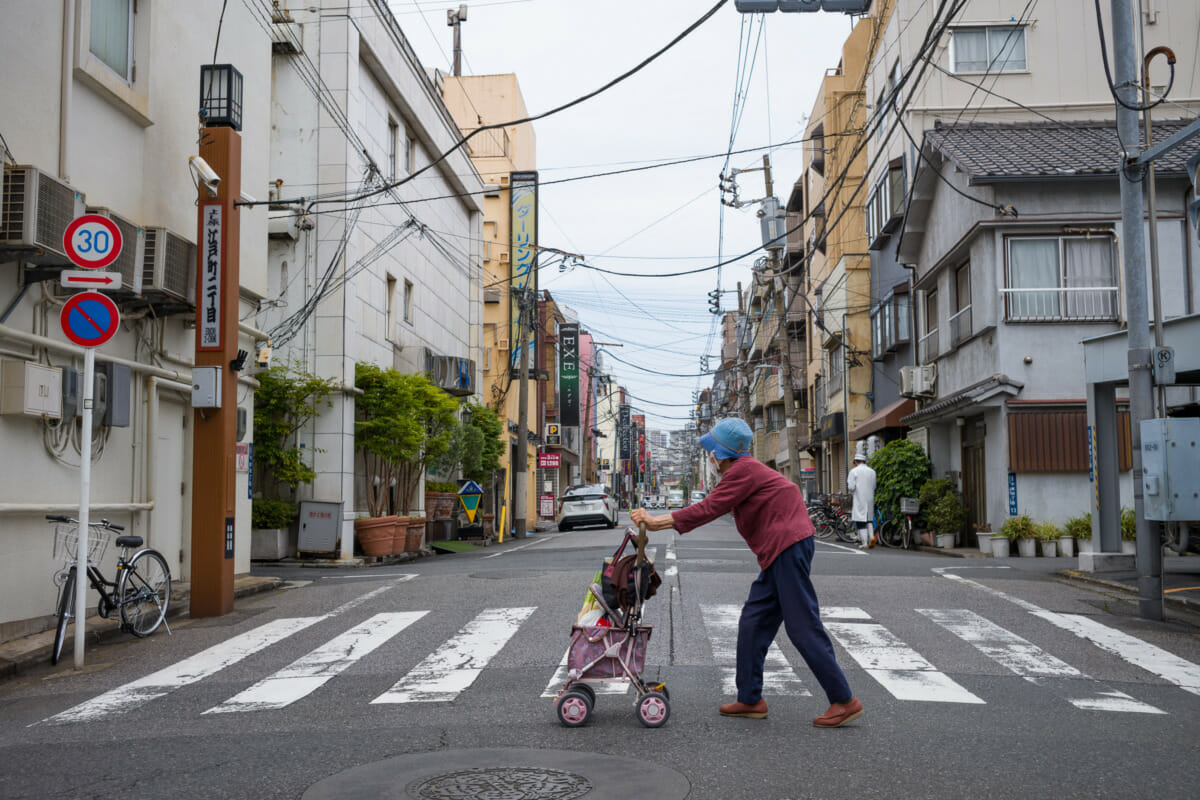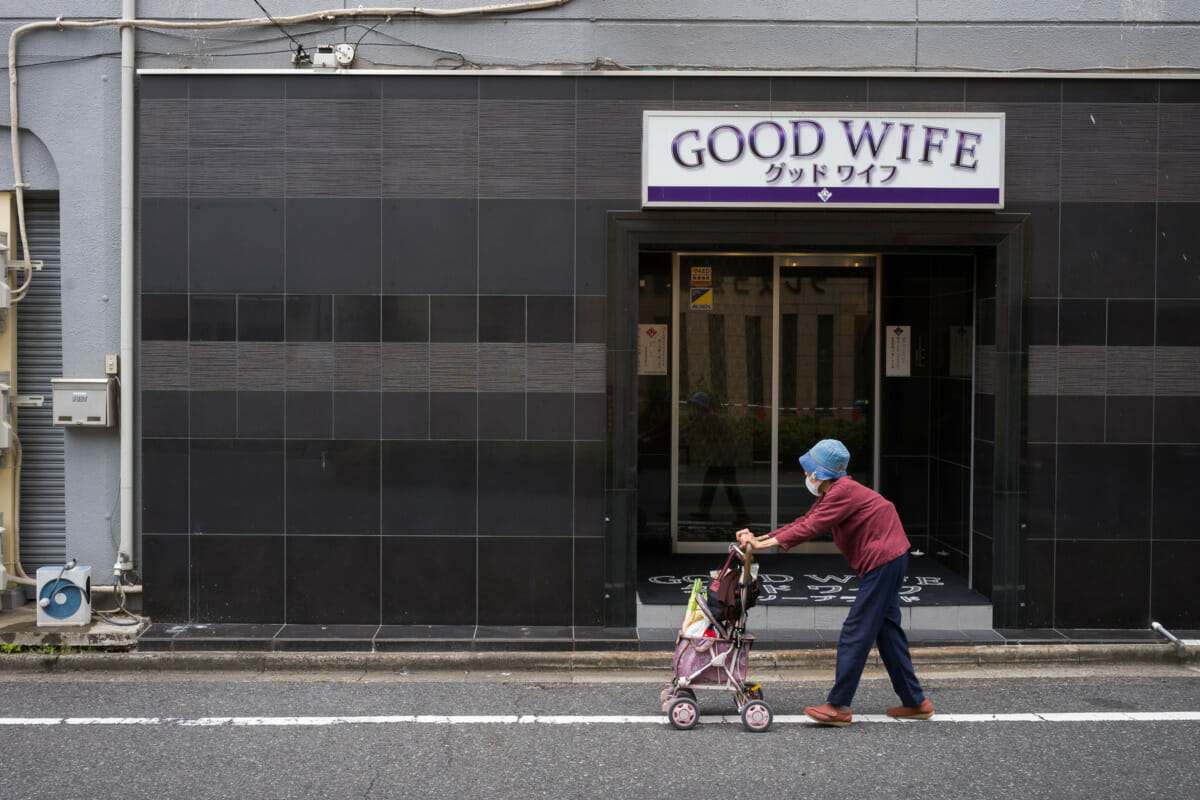The area in the photos below is Tokyo’s Yoshiwara red light district. Well, officially the name isn’t in use anymore, but the same 17th century street layout still exists, as does the adult nature of the services on offer.
Relocated to the current site in 1657, the area has endured earthquakes and fires, plus countless thousands of young women who worked there over the centuries suffered indenture, disease and very often an early death. Many in fact died before they reached their 30s, and the ashes and spirits of a staggering 25,000 former residents are housed in a nearby temple — the vast majority of whom were deemed nothing more than unwanted bodies and unceremoniously dumped outside the gates.
Nowadays, of course, things are different, but while the name and a shocking disregard for human life are in the past, the main line of business is essentially still the same. To sidestep the law, however, it’s nearly all soapland these days. Rather comically named soapland at that. All of which made the sight of an elderly lady walking by with her freshly bought vegetables more than a little incongruous to say the least.


ellen says
Good wife?! Oh my…………
Lee says
Yes, it’s quite a name.
Richard says
Did not know the area is still there. Thanks!
Lee says
Always lots of cars shuttling people in and out, so it’s very likely to be there for years to come as well.
dana m. says
Fascinating Lee, and the Good Wife could not say it better.
Lee says
Thank you. It’s definitely an interesting place. One with a very dark history too. And yeah, the names of the various places say a lot.
Jacob says
I remember when I visited the area, could really feel the tide of history. Seeing the main street and the soap lands with guys outside who seemed like doormen and this is not far away from Sensō-ji. I also visited Yoshiwara Jinja-shrine, lots of women stopping by. to pray.
Lee says
Definitely. Very unlike most red light districts, with even the touts dressed smartly in suits. And like you said, very near touristy Senso-ji as well. Two places that have long histories, but two places that are worlds apart.
cdilla says
Looking through the grill of the small rusted door at Jōkan-ji temple behind which are the remains of tens of thousands of young women was a sobering experience. Empathising with one other human being can be hard – but so many.
Lee says
I know eh? That grave is something else, and the number of people it houses and represents is so huge it’s impossible to comprehend. Thankfully there hasn’t been an effort to erase the area’s dark past, and there’s also never a lack of people visiting to pay their respects. Long gone, but as a group at least, not forgotten.
LAObserver says
Wow. That second paragraph has a considerable content to absorb.
The real sanctity of life comes down to each individual as well as the broader ideas held by society, culture, religion and national attitudes. But the earlier idea you mention of “former residents . . . deemed nothing more than unwanted bodies and unceremoniously dumped outside the gates” is a hard concept to my Western mind.
The clear juxtaposition of your words coupled with the clean/orderly street creates a large measure of internal reflection. (Not all together settled either.)
Lee says
Yeah, it’s a lot to take in for sure, and actually seeing the urns piled high in the tomb subsequently built for all those poor young women makes it hit even harder. And yet even then it’s almost impossible to truly grasp. The sheer callousness of it all, and the numbers. None of it makes sense, and yet that’s exactly how it was.
Like you said, how it looks now further adds to that feeling of disconnect, or at least disbelief. In many ways it’s still very similar, but thankfully in many other ways it’s also very different.